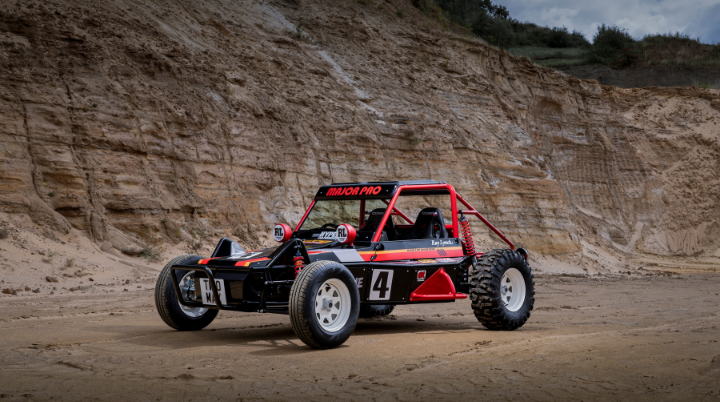Mercedes-Benz has revealed a new era for its revered AMG C 63 with an electrified hybrid version that still packs plenty of power despite only having a 2.0-liter engine.
The days of 6.2-liter V8 bi-turbo engines are a distant memory with the new AMG C 63 SE Performance transformed into a hybrid but with the help of some Formula 1 technology, it means it still produces some scary speed.
State-of-the-art technologies from motorsport to the road see a two-speed electric motor positioned on the rear axle that supports the 2.0-liter turbo engine that is mounted longitudinally at the front. This is the most powerful production four-cylinder in the world with a combined system output of 500 kW (680 hp) 1020 Nm of torque. The AMG C 63 SE Performance can rocket from standstill to 62mph (100 km/h) in 3.4 seconds.
The 2.0-liter four-cylinder turbo engine is combined with a permanently excited synchronous electric motor, a high-performance battery developed in Affalterbach and fully variable AMG Performance 4MATIC+ all-wheel drive.
The 150 kW (204 hp) electric motor is positioned at the rear axle, where it is integrated with an electrically shifted two-speed gearbox and the electronically controlled limited-slip rear differential in a compact electric drive unit (EDU). Experts refer to this layout as a P3 hybrid. The lightweight high-performance battery is also located in the rear above the rear axle.
All essential components are developed in Affalterbach. Among these is the AMG high-performance battery (HPB). The development of the lithium-ion energy storage system is inspired by technologies that have already been proven in the Mercedes-AMG Petronas F1 Team’s Formula 1 hybrid racing cars.
The high-performance battery in the C 63 S E Performance offers a capacity of 6.1 kWh, continuous output of 70 kW and a peak output of 150 kW for ten seconds. The low weight of only 89 kilograms allows the very high power density of 1.7 kW/kg. For comparison: conventional batteries without direct cooling of the cells achieve about half this figure. Charging is via the 3.7 kW on-board AC charger, at a charging station, wallbox or household socket. The battery is designed for fast power delivery and draw, not for the longest possible range. Nevertheless, the electric range of 13 kilometers allows a practical operating radius.
The basis for the high performance of the AMG 400-volt battery is its innovative direct cooling system: for the first time, a high-tech coolant based on an electrically non-conductive liquid flows around all 560 cells and cools them individually. Every battery needs a defined temperature for optimum power delivery. If the battery becomes too cold or too hot, it noticeably loses power at times, or has to be regulated to avoid damage if the heat becomes excessive. The consistent temperature of the battery therefore has a decisive influence on its performance, service life and safety. Conventional cooling systems, which only cool with air or the entire battery pack indirectly with water, quickly reach their limits – especially as the requirements continue to increase due to cells with ever increasing energy density. If the thermal management does not fulfil its function optimally, the battery is at risk of ageing prematurely.
For the direct cooling, the AMG specialists had to develop new cooling modules that are only millimetres thin. Around 14 litres of coolant circulate from top to bottom through the entire battery past each cell with the help of a specially developed high-performance electric pump, also flowing through an oil/water heat exchanger attached directly to the battery. This conducts the heat into one of the vehicle’s two low- temperature (LT) circuits, and from there to the LT radiator at the front of the car where it is released into the outside air. The system is designed to ensure even heat distribution in the battery.
The result is that the battery is always within a consistent, optimum operating temperature window averaging 45 degrees Celsius, no matter how often it is charged or discharged. It may well be that the average temperature is exceeded when driving at high speeds. The protection mechanisms are therefore configured so that the maximum performance can be obtained from the battery, with the temperature level subsequently lowered by direct cooling. Conventional cooling systems cannot cope with this, and the battery can no longer fully utilise its potential. That is not the case with the AMG high-performance battery: even during fast laps in hybrid mode on the race track, where acceleration (battery is discharged) and deceleration (battery is charged) are frequent, the energy storage system retains its high performance capacity.
Only effective direct cooling makes it possible to use cells with a very high power density. Thanks to this individual solution, the battery system is particularly light and compact. The low weight is also due to the material-saving busbar concept, and the lightweight yet strong crash structure of the aluminum housing.
When driving on all-electric power, the legally required Acoustic Vehicle Alerting System warns the surroundings that the Performance hybrid is approaching. A specially composed, low-frequency and speed- modulated AMG sound is emitted to the outside via a loudspeaker at the front and a soundbar with two loudspeakers at the rear. The sound can also be heard at a subdued level in the interior, as acoustic feedback for the passengers. In the European Union the system is active up to 20 km/h, in the USA up to the equivalent of approx. 30 km/h. Afterwards, the electric drive signal fades out.





